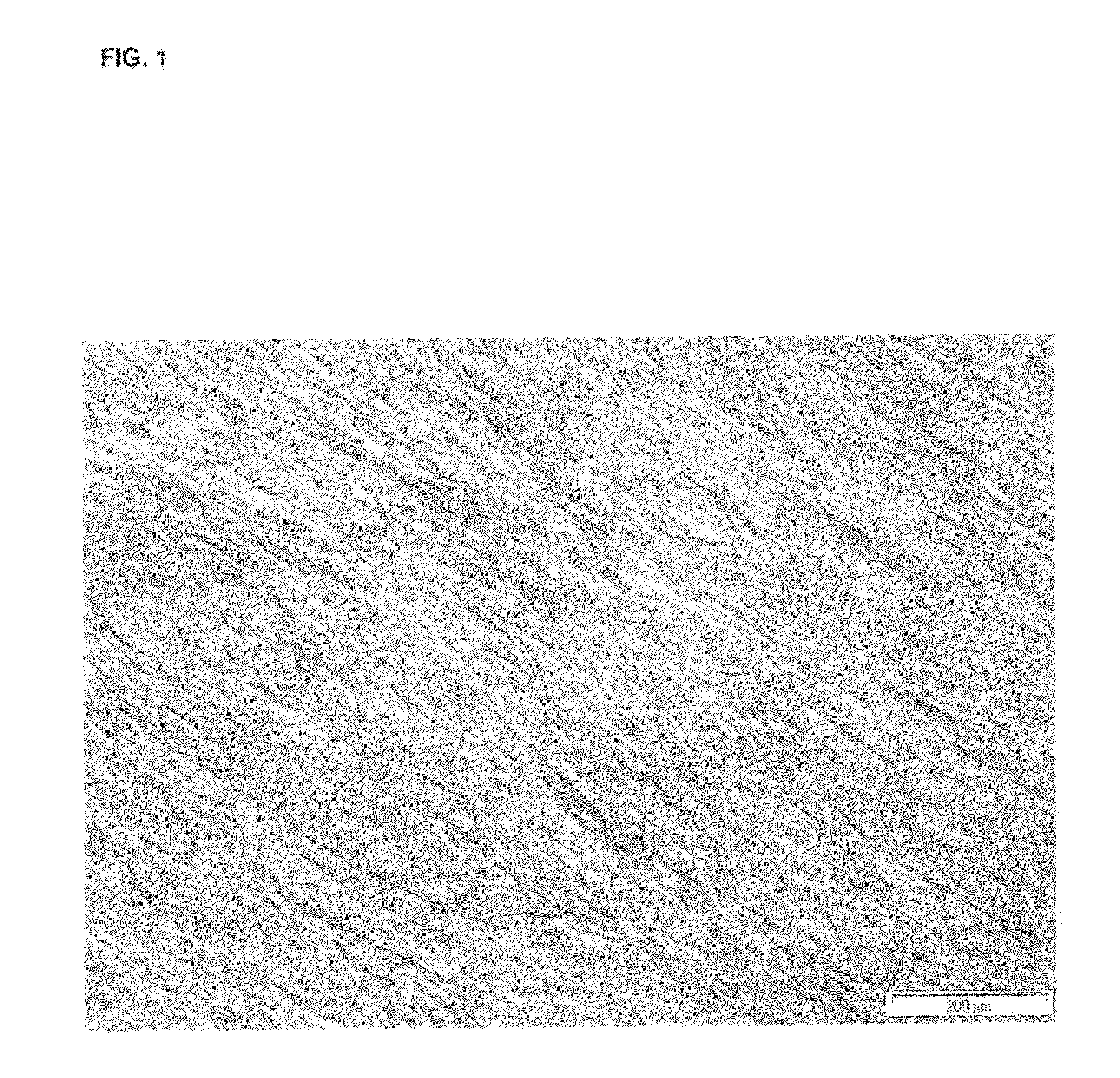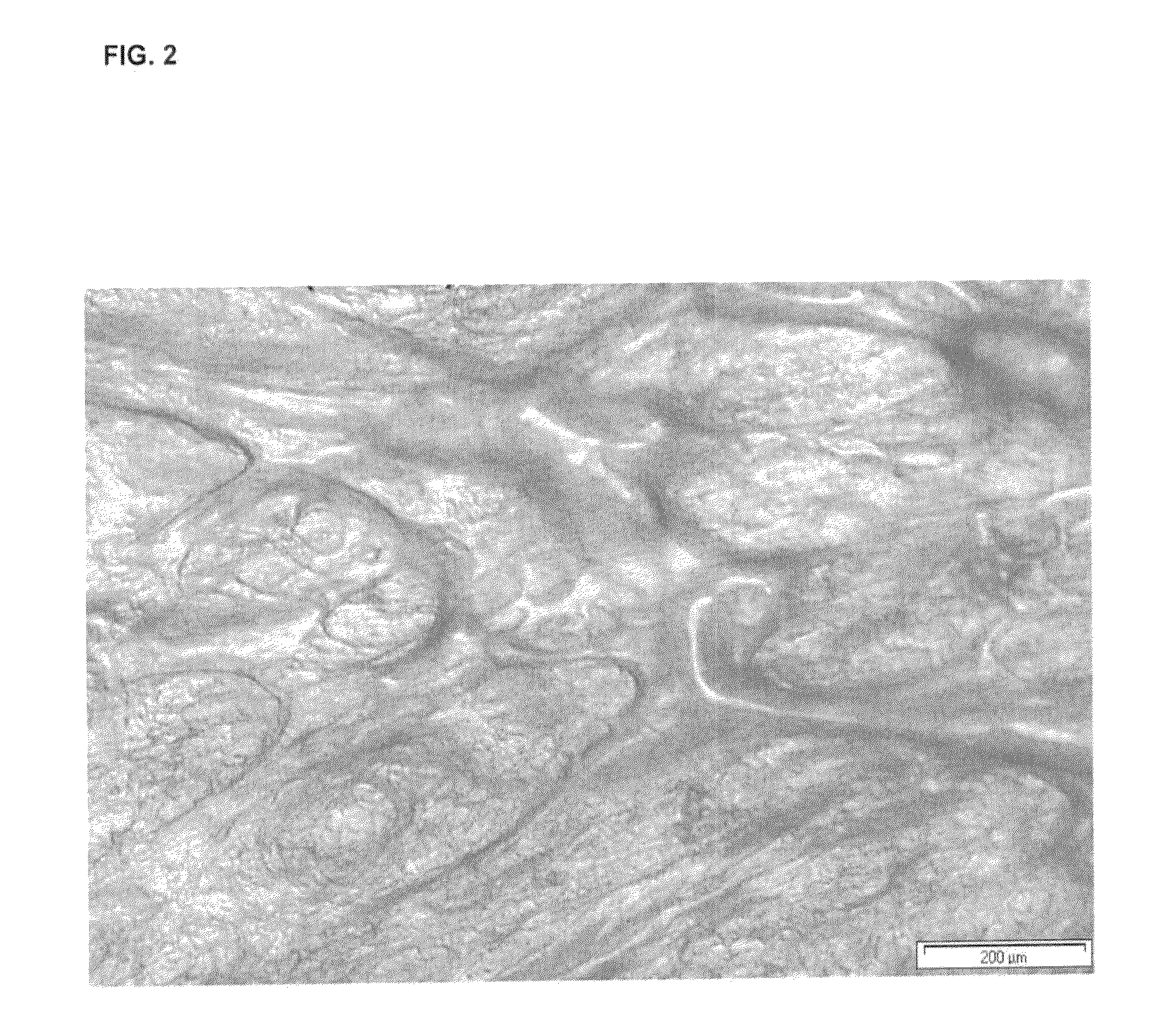Blends of polar low density ethylene copolymers and poly(hydroxy carboxylic acid)s
a low-density ethylene copolymer, poly(hydroxy carboxylic acid) technology, applied in the field of dyes of poly (hydroxy carboxylic acid) s with low-density ethylene copolymer, can solve the problems of poor mechanical strength, requires an additional industrial step, and cannot achieve the same advantageous properties of conventional plastics, so as to improve the gas barrier properties of pldpe, improve the water breathability of pldpe, and improve the effect of printability
- Summary
- Abstract
- Description
- Claims
- Application Information
AI Technical Summary
Benefits of technology
Problems solved by technology
Method used
Image
Examples
examples
[0097]Two blends comprising 20% by weight of PLA Terramac® 6201 and 80% by weight of different polyethylenes were made by dry blending the two components, followed by extrusion at a temperature of 180° C. for about 30 minutes. Blend “A” was made with 80% by weight of an ethylene-vinyl acetate copolymer (EVA) and blend “B” with 80% by weight of a high-pressure polymerised LDPE without comonomer.
[0098]The properties of the individual components of each blend are provided in Table 1.
TABLE 1EVALDPEPLADensity / g / cm3N / A0.9241.26 at 23° C.Melt index MI2 / 0.750.89-10 at 233 ppm H20g / 10 min18-20 at 1000 ppmH20MW / da8000090000106940MWD4.55.41.75CH3 / 1000 C.N / A23.7N / AVinyl acetate17N / AN / Acomonomer / wt %N / A = not applicable
[0099]Densities of the polyethylenes and the PLA were measured according to ASTM D 1505. Melt indices MI2 for the polyethylenes were measurable according to ASTM D 1238, i.e. at 190° C. using a load of 2.16 kg, and according to the same standard for PLA, except the measurements we...
PUM
| Property | Measurement | Unit |
|---|---|---|
| temperatures | aaaaa | aaaaa |
| pressure | aaaaa | aaaaa |
| density | aaaaa | aaaaa |
Abstract
Description
Claims
Application Information
 Login to View More
Login to View More - R&D
- Intellectual Property
- Life Sciences
- Materials
- Tech Scout
- Unparalleled Data Quality
- Higher Quality Content
- 60% Fewer Hallucinations
Browse by: Latest US Patents, China's latest patents, Technical Efficacy Thesaurus, Application Domain, Technology Topic, Popular Technical Reports.
© 2025 PatSnap. All rights reserved.Legal|Privacy policy|Modern Slavery Act Transparency Statement|Sitemap|About US| Contact US: help@patsnap.com



